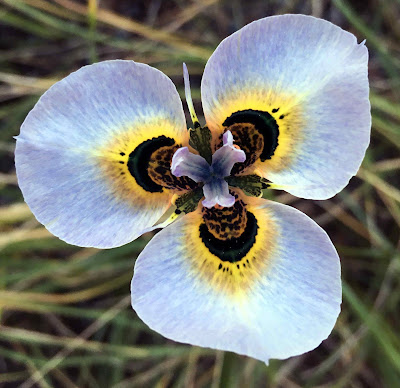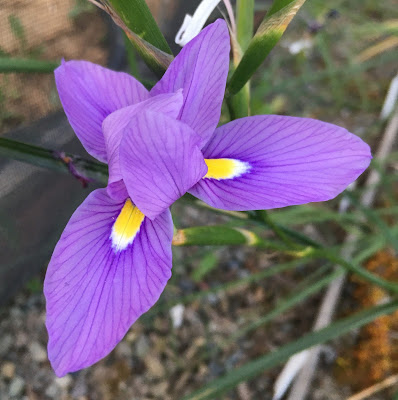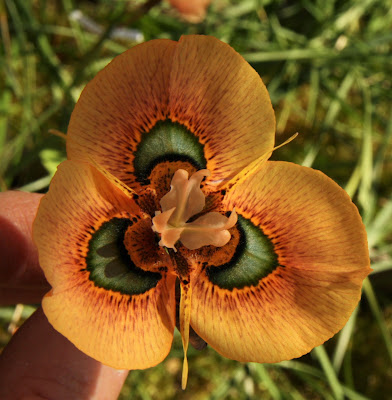Seed parent:
MM 13-171a (
M. tripetala X
villosa h)
Pollen parent:
MM 13-10a (
aristata x
villosa) X
neopavonia 'Sunrise'
Not the most spectacular flower, but each one lasted for more than a week (compared to 3-4 days for a typical Moraea). So I made a lot of crosses with it.
As for the colors, this is one of those flowers that I have trouble understanding. The seed parent is a very petty hybrid with streaky violet tepals and a deep green eye. The pollen parent is light yellow-orange with a darker orange blaze in the center. I don't know how you get white from that combination, but what the heck.
This plant is notably vigorous. It's taller, has bigger flowers, and a higher bud count than most other Moraea hybrids. I'm using it heavily in breeding as of 2023. This photo gives you an idea of how big it is:
Here's a sibling:






























%20%20%20M18-330%20.JPG)





















%20.JPG)


